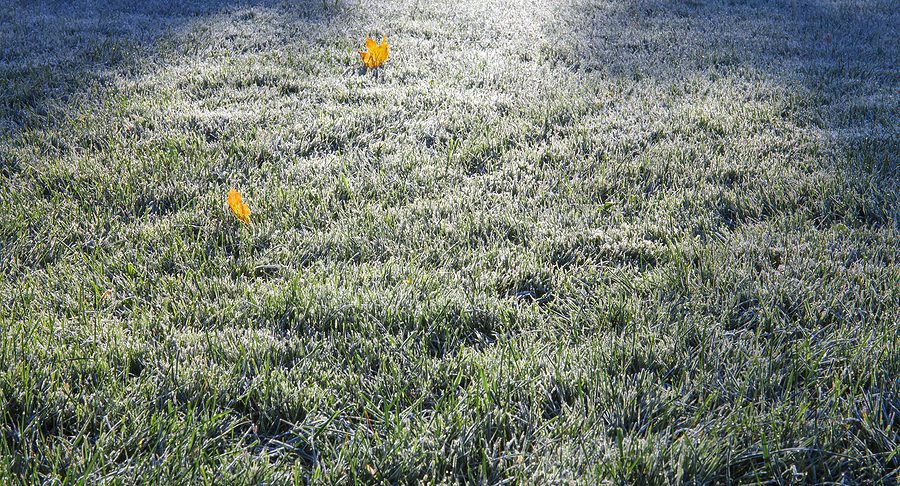How to Winterize Your Lawn in Albuquerque

Winter is coming. Wait, it’s already here. You could well be asking, “What about my lawn?” Fear not! Winterizing your lawn in Albuquerque can be easy, effective, and also oddly gratifying. A few simple steps will lay the groundwork for a colorful, lush landscape in spring. Let’s dive in.
Understanding Your Grass
The first step you should take before doing anything is to determine the type of grass you have. The two main categories in Albuquerque are warm-season and cool-season grasses. Knowing these will help prepare you for winter.
Cool-Season Grasses
Some cool-season grasses are: perennial ryegrass, fescue, Kentucky bluegrass. They do well in the cooler weather of fall. Cool-season grass, here’s the lowdown:
- Fall is the best time to fertilize. Seek available in stores winterizer fertilizers from around October or November.
- By fall, grass starts to source nutrients from its leaves and transfer them down to the roots. This process is vital. The shorter days and cooler temperatures tell your grass to get ready for dormancy. By fertilizing, you are guaranteeing those roots enough nutrients for winter storage.
Warm-Season Grasses
Cool-season grasses, such as ryegrass, kyblue, fescue, and tall fescue, have different behaviors from warm-season types, such as centipede, St. Augustine, Bermuda, and zoysia. Here’s what you need to know:
- These grasses fall dormant when the temperatures are low. Do not fertilize after Sept. 1. Doing so can cause damage from freezing temperatures.
- You don’t want to fertilize it – instead, focus on how you’re keeping it alive and absorbing the nutrients it needs so when it goes dormant, it has plenty of energy to survive the chill.
Steps to Winterize Your Lawn
Now that you know your type of grass, it’s time to get to work. Here are step-by-step instructions on how to winterize your Albuquerque lawn the right way.
Mow Your Lawn
Mow your lawn to the correct height for your grass type.
For Cool-Season Grasses: 2.5 to 3 inches. That height helps to protect the roots and reduce the risk of snow mold.
For Warm-Season Grasses: Mow it lower, to about 1 to 2 inches, for dormancy.
Rake Up Leaves
Left on the lawn, leaves can suffocate your grass. Rake them up so your grass can breathe.
Why It Matters: An unkempt lawn allows mold and pests to settle in for winter.
Aerate the Soil
Aeration allows air, water and nutrients to penetrate deeper into the soil where they are more effective, encouraging healthy root growth.
How To Aerate: Use a core aerator, which extracts small plugs of soil. This can be especially helpful in cool-season grasses.
Fertilize Appropriately
This step depends on the variety of your grass.
Cool-Season Grasses: It’s the time to apply a winterizer fertilizer in late October or November. This feeds the roots and allows them to store energy for spring.
Warm-Season Grasses: No fertilizing at this stage, but your lawn should be healthy going into winter.
Water Before the Freeze
As your lawn goes dormant, it requires moisture.
When to Water: Water thoroughly before the ground freezes. That keeps your grass with ample springy, moist roots.
Monitor Temperature Changes
Keep an eye on the weather. Keep Your Lawn Care Schedule in Mind But Plan for Sudden Cold
Frost Warnings: Be sure to prepare your lawn in advance for frost, if temperatures are expected to drop that low.
Mulch Your Flower Beds
Mulch around flower beds to hold moisture and to deter weeds.
This practice creates a microclimate that can keep your plants sheltered from cold at least for a few more months.
Check Your Irrigation System
If you have an irrigation system, ensure it’s been winterized.
Why It Matters: Keeping water from freezing in the pipes will spare you expensive repairs in the spring.
Why You Should Prepare for Winter
You may ask yourself, “Why do I want to go through all of this?” The reason is simple: a prepared lawn means a healthier, more resilient yard in the spring.
Aesthetic Appeal
Having a lush lawn will add to the curb appeal of your house. When your neighbors watch a lush, green yard sprout in spring, they will know, you took the time to care for it.
Easier Spring Maintenance
By winterizing now, you reduce the work you’ll have to do come spring. You’ll already have your grass prepped to grow, so you can concentrate on the rest of your landscaping.
Cost-Effective Lawn Care
A little preparation now can mean savings later; here’s what you need to know to get started. An expensive intervention is less likely in the future.
Common Mistakes to Avoid
Even experienced gardeners can have missteps in winter prep. Some common traps to watch out for.
Over-Fertilizing
This is particularly important for warm-season lawns. Late fertilization can cause injury, especially if prolonged winter freezes occur.
Ignoring Soil Health
If your soil is unhealthy or compacted, your lawn will suffer. Soil health is promoted with routine aeration and soil testing.
Neglecting Watering
Remember to water before it gets freezing. Dry, thirsty grass is vulnerable to damage during the winter.
Final Thoughts
Winterizing your Albuquerque lawn doesn’t have to be an overwhelming chore. With a little know-how and some simple steps, you can get your grass ready to grow when spring rolls in. Knowing the special requirements of your lawn, whether it is cool-season or warm-season grass, will help tremendously.
